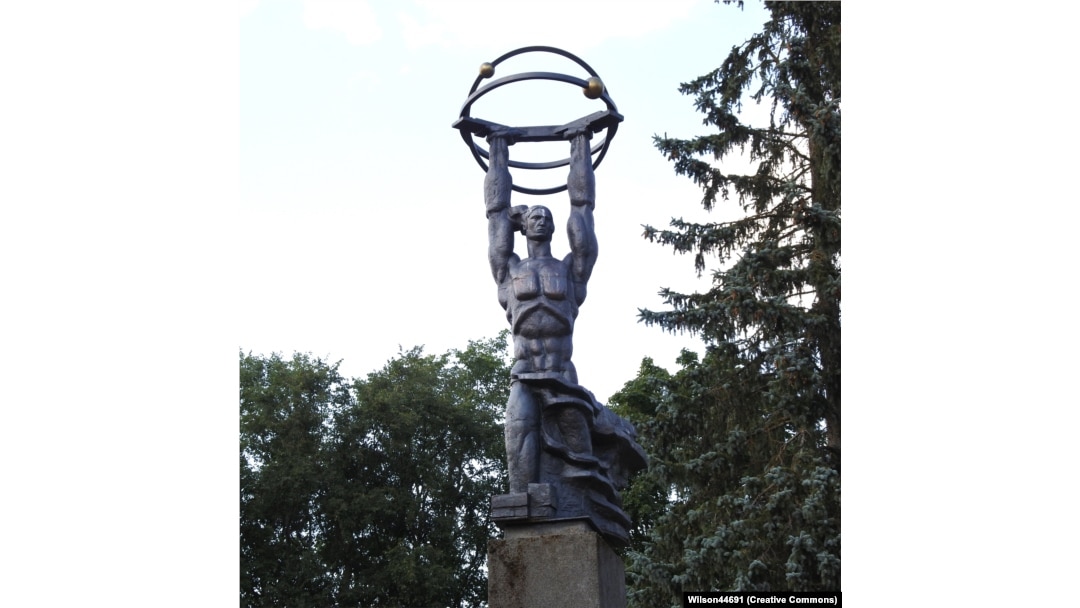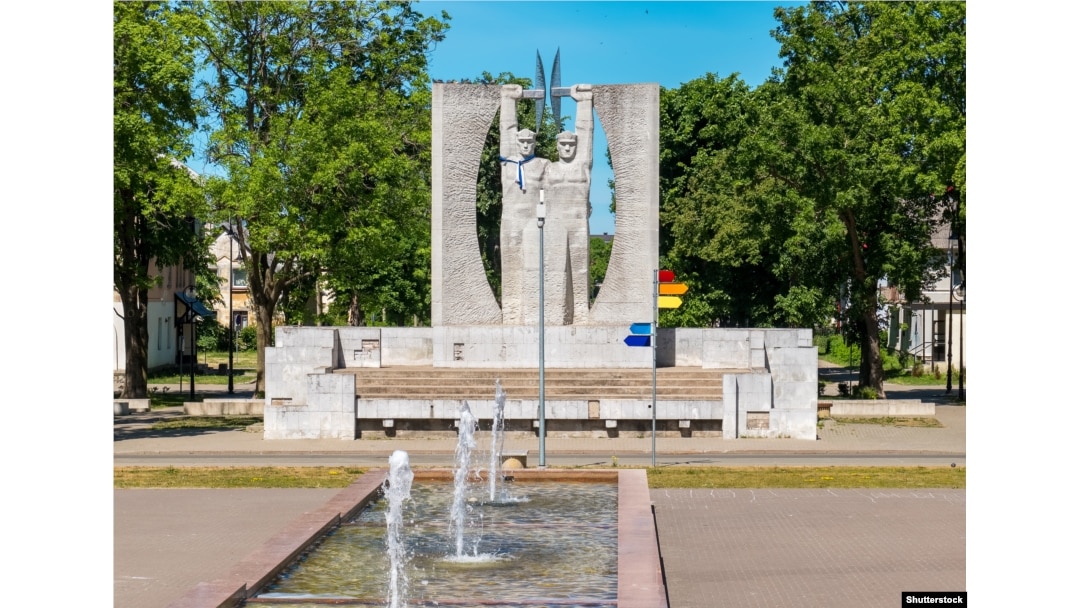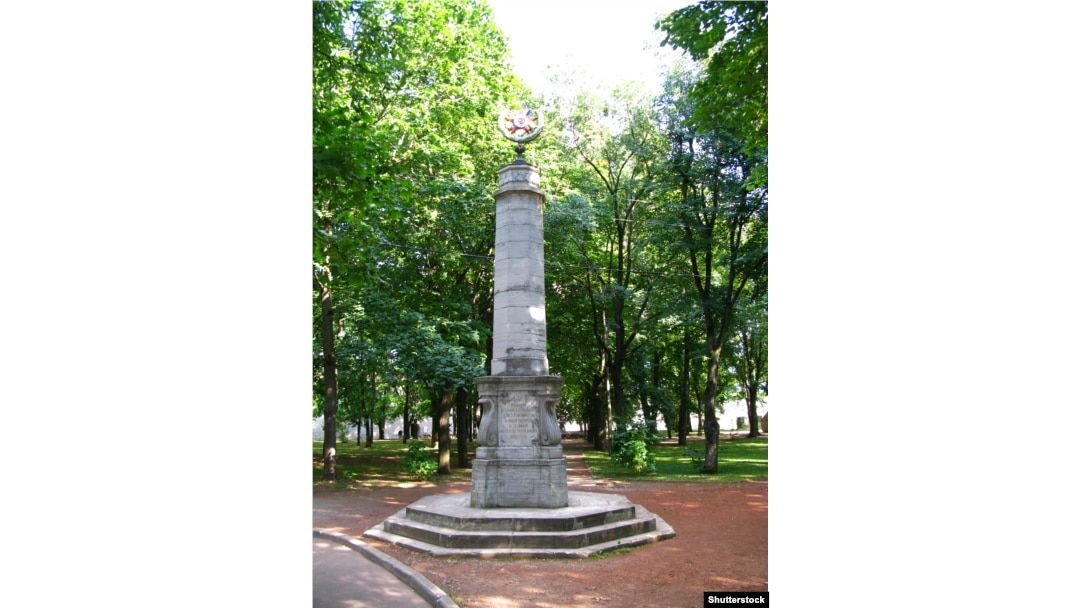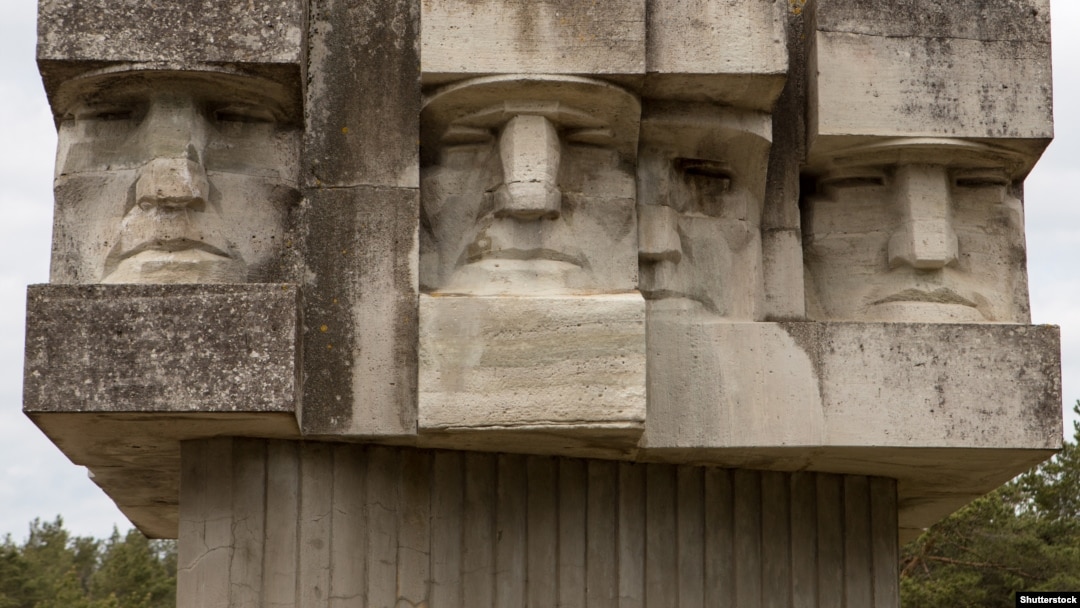Tallinn has declared the imminent removal of Soviet monuments from public spaces across Estonia. Here's a look at some of the Baltic country's communist-era memorials and statues.

Monument To Atomic Power in the northeastern town of Sillamae.
This statue is one of more than 200 Soviet-era monuments in Estonia that may be considered for removal. In early August, Estonian Prime Minister Kaja Kallas announced at a press conference that "Soviet monuments must be removed from public spaces, and we will do this as quickly as possible."

A monument titled Glory To Work in the center of Kohtla Jarve, northeastern Estonia.
Kallas cited the Russian invasion of Ukraine as opening "wounds in our society that these communist monuments remind us of."
For many Estonians, the monuments are lingering symbols of a half-century of dominance and oppression by Moscow. More than 75,000 Estonians were killed, imprisoned, or deported by the Soviets between 1940 and 1991, according to the Estonian government.

A monument to soldiers who fell during World War II in Narva, a northeastern town on the border with Russia.
The Soviet Union occupied the Baltic states of Estonia, Latvia, and Lithuania in 1940 and ruled them from 1944, after invading Nazi forces retreated, until they regained independence in the Soviet collapse of 1991. The United States and several other Western governments never recognized them as Soviet republics.
A monument to Soviet troops in the northwestern town of Lihula that was defaced in 2007.
Russia's government has slammed the decision to remove the monuments, some of which mark the physical remains of Soviet soldiers who died fighting Nazi forces.
A monument to Lenin that was moved from the center of Narva to this nondescript space at the town's Hermann Castle in the 1990s.
Russian presidential spokesman Dmitry Peskov said on August 5 that "the elimination of monuments to those who saved Europe from fascism is outrageous, of course. It does no credit to any nation, including Estonia."
The full scope of Estonia's plans remains unclear, though memorials located at cemeteries will apparently be off-limits and other monuments may simply be relocated, as has been done in the past.
A monument commemorating a World War II battle on the island of Saaremaa.
Kallas said commemorating the dead "will not be prohibited, but it should be done in the right place, which is at a cemetery where it can be done with dignity."
The Bronze Soldier Of Tallinn, a Soviet World War II memorial originally named the Monument To The Liberators Of Tallinn.
In April 2007, this bronze soldier was moved from central Tallinn to its current location at a cemetery in the Estonian capital. The relocation, which included digging up Soviet soldiers’ remains, sparked riots in the capital during which a Russian man was stabbed to death.
A monument to the Soviet Army in Narva marks the point where Soviet forces crossed the Narva River and repelled Nazi forces.
On August 16, local authorities in Narva, a border city where ethnic Russians are a large majority, began removing this replica T-34 tank from its pedestal. After a crowd gathered around the monument in early August to protest its planned disappearance, officials claimed they would not remove the tank "in the dead of night."
The tank will be relocated to a war museum in Viimsi, north of the capital, Tallinn.
“Today’s decision helps to keep our focus on our most important tasks: ensuring Estonia’s security and helping all the people of Estonia weather the crises caused by the war in Ukraine,” Kallas was quoted as saying.
A memorial in Tallinn to union members who "died at the hands of the Estonian bourgeoisie" in September 1919.
On August 12, Estonia deported two Russian journalists allegedly reporting on the planned removal of Soviet monuments. Estonian border police claimed the pair "came to Estonia to do propaganda work in violation of the visa regime."


